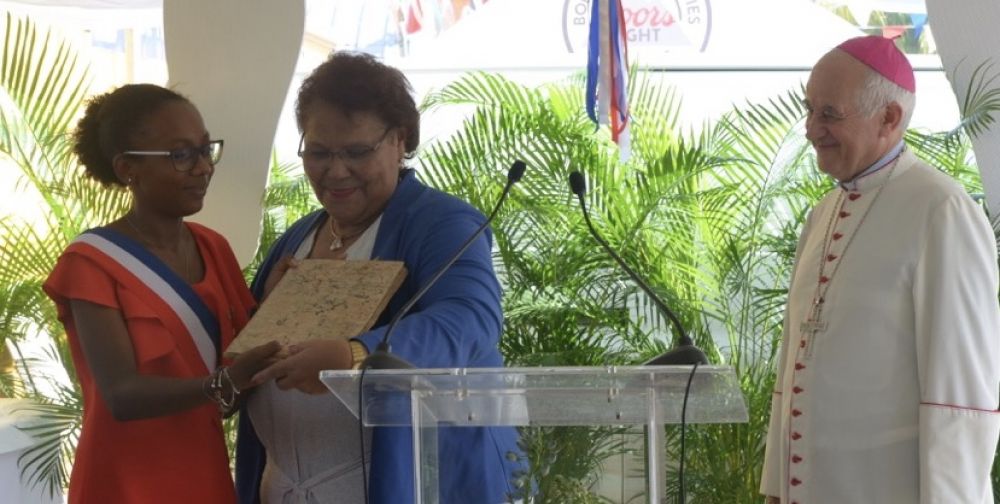The Territorial Archives will recover eight parish registers from the eighteenth century
During an inventory of the Guadeloupe diocese archives, some parish registers from Saint-Martin were identified. Monsignor Riocreux, Bishop of Guadeloupe, therefore, returned the eight documents to Saint-Martin on Friday, November 11 during the ceremony of the feast day of Saint-Martin. They cover a period ranging from 1769 to 1794. Several of them will require massive restoration work before being accessible to the public. The damage noticed so far is due to a fire which these records survived. Written in Saint-Martin by Catholic priests from the parish, these documents had been kept in Marigot until the 1970s. For conservation reasons, and, given their advanced state of degradation, they were then transferred to the Diocese of Guadeloupe which offered the best conditions of conservation at the time. The present legislation requires that parish registers be conserved within a public archive service. The parish records will now be kept at the Territorial Archives of Saint-Martin.
These so-called parish registers were kept by the parish priests until the French Revolution: they recorded the baptisms, marriages and burials, performed by the Catholic priests. Under the former regime, they were the equivalent of our current civil registries. First of all, civil registry records are a proof of citizenship and filiation for every citizen and a source of creating entitlements, especially for inheritances.
These documents were produced before the first abolition of slavery (February 4, 1794) and they have acquired a priceless historical value. The terms used are those from the eighteenth century. The returned parish registers show how society was structured at that time: Catholics and non-Catholics, whites and people of color, slaves and free men, according to the terms of that time.
Written between 1769 and 1794, these certificates reveal individual and family histories. Therefore, Julie, an Anguillan slave was baptized on October 19, 1773, at the same time as Jean-Henry, "a free negro." Charles Lorié, a naval captain, was buried in Saint-Martin at the age of 45 on September 18, 1773: he had come from Marseille. The Marigot catholic church was called Notre Dame de l'Assomption in 1784. Two non-Catholics, Georges Smagg and Elisabeth Howell had their marriage registered which was celebrated "on the Dutch side" before the priest on October 12, 1792. And many more names that are still present today on the island and others which have disappeared.
The historical context
In the sixteenth century, François I, King of France from 1515 to 1547, decreed by the Villers-Cotterêts order (1539) the keeping of registers in French for recording baptisms by the parish priest. These registers had to be filed every year at what was the equivalent of the Court which was then called (the bailiwick or seneschal). Forty years later, in 1579, the order of Blois extended this obligation to recording marriages and deaths. On September 20, 1792, in the middle of the French Revolution, the National Assembly withdrew the keeping of the parish registers from the clergy, and therefore the Roman Catholic priests, and assigned the mayors with the keeping and conservation of civil acts, a jurisdiction which is still exercised today.









